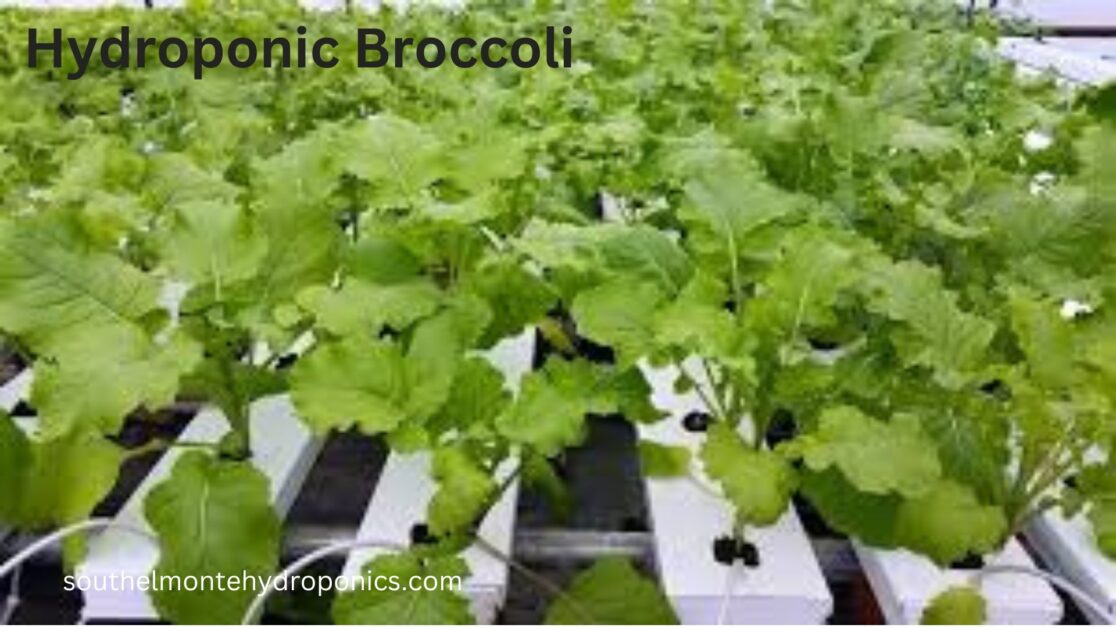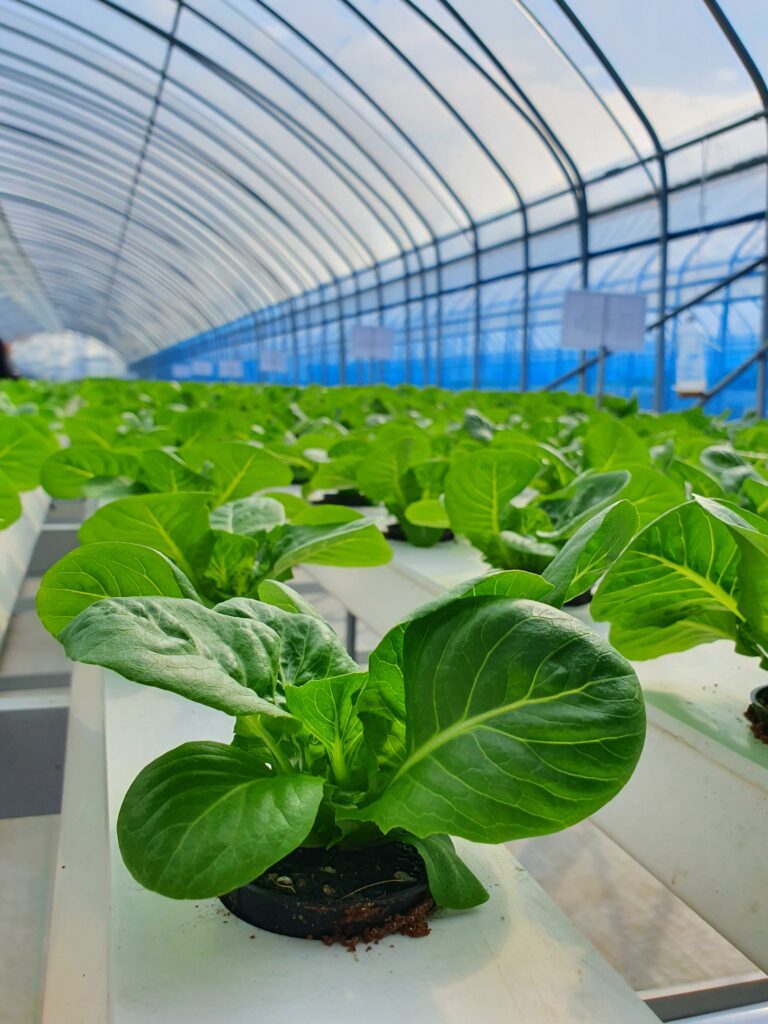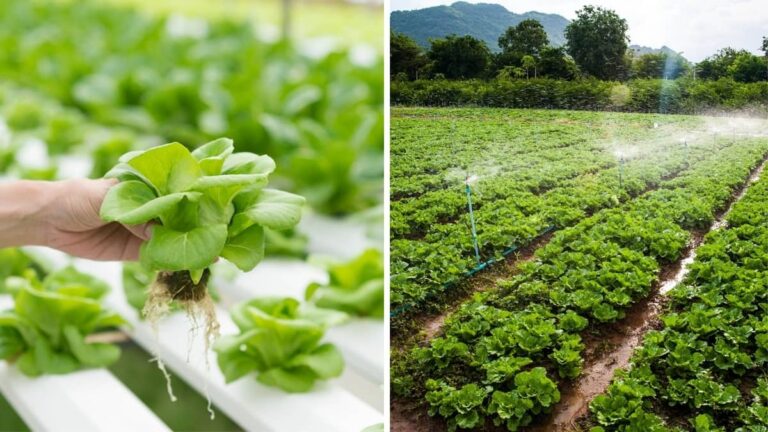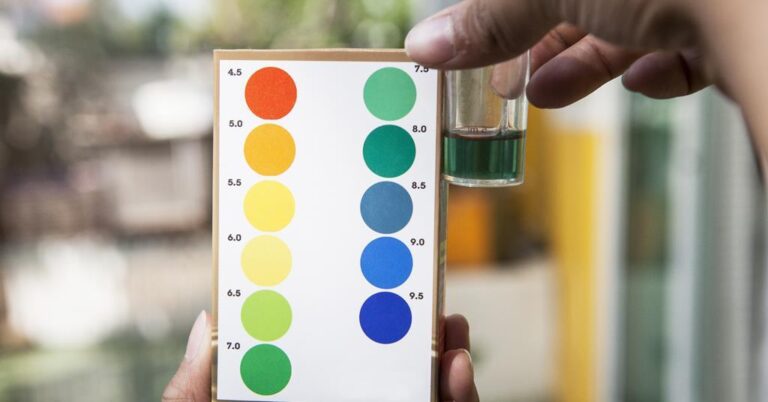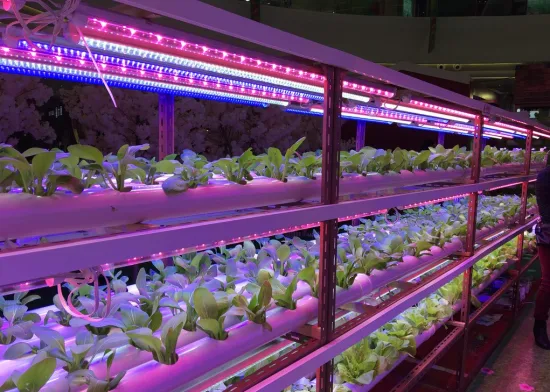Hydroponic Broccoli: How to Grow Nutritious and Delicious No. 1 Broccoli in Hydroponics
Table of Contents
The Benefits of Growing Hydroponic Broccoli System
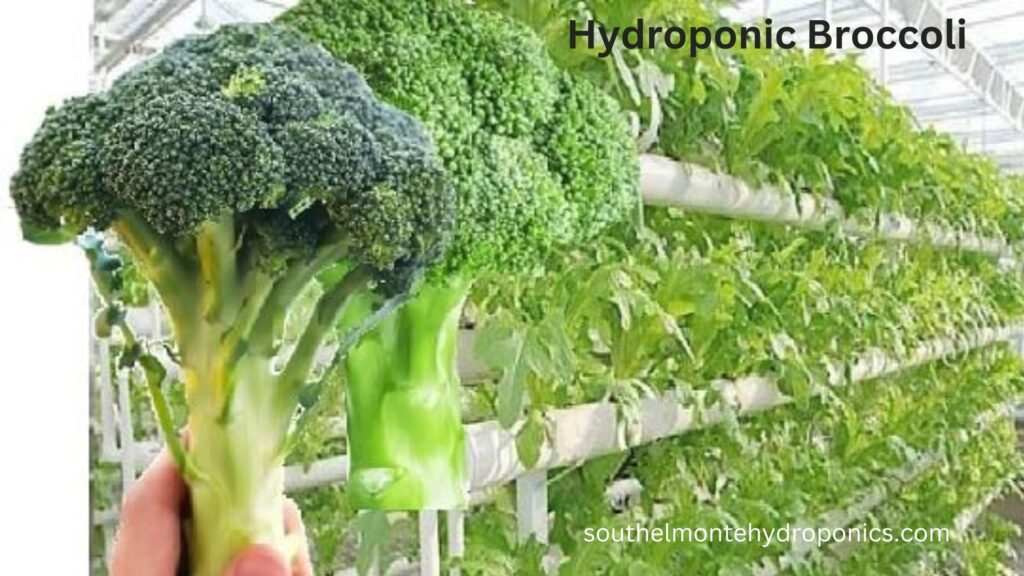
Broccoli is a nutritious and versatile vegetable that can thrive in a hydroponic system, offering several benefits to gardeners. One notable advantage is the improved control over growing conditions. In a hydroponic setup, factors such as light, temperature, and nutrient availability can be precisely regulated, resulting in optimal growth and yield for broccoli plants. This level of control allows for year-round cultivation, regardless of external weather conditions or seasonal limitations.
Another benefit of growing broccoli in a hydroponic system is increased productivity. Compared to traditional soil-based cultivation, hydroponics can yield higher volumes of broccoli in a shorter time frame. This is mainly due to the efficient absorption of nutrients in hydroponics, where the plants receive precisely balanced nutrient solutions directly to their root systems. This targeted approach ensures that the broccoli plants receive all the essential nutrients they need for robust growth, resulting in larger and healthier harvests. Additionally, hydroponic systems are often designed vertically, maximizing space utilization by growing multiple layers of broccoli plants in a compact area. This efficient use of space further enhances productivity and allows for the cultivation of a greater number of plants.
Overall, the benefits of growing broccoli in a hydroponic system are clear. With improved control over growing conditions and increased productivity, hydroponic cultivation offers a promising solution for gardening enthusiasts seeking a reliable and efficient way to grow this nutritious vegetable. In the following sections, we will delve deeper into the basics of hydroponics for broccoli cultivation and explore essential factors such as selecting suitable varieties, setting up the hydroponic system, providing ideal growing conditions, and managing nutrient solutions. By following these guidelines, gardeners can ensure successful and rewarding broccoli harvests using hydroponics.
Understanding the Basics of Hydroponics for Broccoli Cultivation
Hydroponics is a soil-less method of gardening that has gained popularity in recent years. It involves growing plants in nutrient-rich water, providing them with all the essential elements they need to thrive. When it comes to broccoli cultivation, hydroponics offers several benefits that make it an attractive option for both commercial growers and home gardeners.
One of the key advantages of hydroponics for broccoli cultivation is the ability to control the growing environment. By eliminating soil, growers can closely monitor and adjust factors such as pH levels, nutrient concentrations, and water quality. This level of precision ensures that the plants receive optimal conditions for growth, leading to healthier and more productive crops.
In addition, hydroponics allows for
Selecting the Right Varieties of Broccoli for Hydroponic Growth
When it comes to selecting the right varieties of broccoli for hydroponic growth, there are several factors that need to be considered. First and foremost, it is essential to choose broccoli varieties that are well-suited for hydroponic systems. These varieties should have traits such as compact growth, disease resistance, and a shorter maturity period.
One popular variety of broccoli that is highly recommended for hydroponic cultivation is the “Green Magic” variety. This variety is known for its compact size, making it a perfect choice for limited space hydroponic setups. It also has excellent disease resistance, which is crucial in preventing the spread of harmful pathogens in the controlled environment of a hydroponic system.
Another excellent option for hydroponic broccoli cultivation is the “Marathon” variety. This variety is prized for its ability to thrive in cooler temperatures, which is often advantageous in hydroponic setups where temperature control is critical. Additionally, the “Marathon” variety has a shorter maturity period, allowing for quicker harvests and more frequent crop rotations in the hydroponic system.
Selecting the right varieties of broccoli for hydroponic growth is a crucial step in ensuring a successful harvest. By choosing varieties with traits that are well-suited for hydroponic cultivation, such as compact growth, disease resistance, and shorter maturity periods, gardeners can maximize their yields and enjoy a bountiful harvest of nutrient-rich broccoli. So, take the time to research and select the best varieties for your hydroponic system, and get ready to reap the rewards of your efforts.
Setting Up Your Hydroponic System for Broccoli Cultivation
To ensure successful broccoli cultivation in a hydroponic system, setting up the right infrastructure is crucial. Here are a few key considerations when establishing your hydroponic system for growing broccoli.
First and foremost, selecting the appropriate growing medium is essential. Broccoli thrives in a well-drained medium that provides ample aeration to the roots. Many hydroponic growers opt for inert mediums such as rockwool, perlite, or coconut coir, as they offer excellent water retention and aeration properties.
Next, the choice of a suitable hydroponic system is vital for broccoli cultivation. Common options include nutrient film technique (NFT), deep water culture (DWC), and drip irrigation systems. Each system has its own advantages and considerations, such as nutrient delivery, water circulation, and ease of maintenance. Carefully researching and selecting the system that aligns with your specific needs and resources will contribute to the success of your broccoli crop.
Additionally, optimizing environmental conditions within your hydroponic setup is crucial for healthy broccoli growth. Maintaining appropriate temperature and humidity levels promotes optimal photosynthesis and prevents the development of diseases. Consistently monitoring and adjusting these parameters will ensure favorable conditions for your hydroponic broccoli plants.
In the next section, we will explore in detail the ideal growing conditions and nutrient solutions necessary for successful hydroponic broccoli cultivation.
Providing the Ideal Growing Conditions for Hydroponic Broccoli
To ensure optimal growth and development of your hydroponic broccoli plants, it is crucial to provide the ideal growing conditions. Creating a conducive environment will not only support the plants’ overall health but also maximize their productivity. Here are some key factors to consider when providing the perfect growing conditions for hydroponic broccoli.
First and foremost, light is essential for photosynthesis, the process through which plants convert light energy into chemical energy to fuel their growth. Broccoli plants require at least 12-14 hours of light each day, making it vital to choose the right lighting system. LED grow lights are highly recommended as they produce the appropriate light spectrum for plant growth while minimizing energy consumption and heat production. Position the lights at the proper height and angle to ensure uniform light distribution across all plants in the hydroponic system.
Temperature and humidity play a crucial role in creating an optimal growing environment for hydroponic broccoli. Broccoli plants thrive in temperatures between 60°F and 70°F (15°C to 21°C). Fluctuations outside this range can negatively impact growth and development. Maintaining consistent temperature levels can be achieved by using ventilation systems, fans, and air conditioning. Similarly, maintaining relative humidity levels between 50% and 70% will help prevent the onset of diseases and maintain the plants’ vigor.
In the next section, we will explore the importance of nutrient solutions in hydroponic broccoli cultivation. By providing the plants with the right balance of essential elements, we can ensure optimal nutrition and robust growth.
Nutrient Solutions: Ensuring Optimal Nutrition for Hydroponic Broccoli
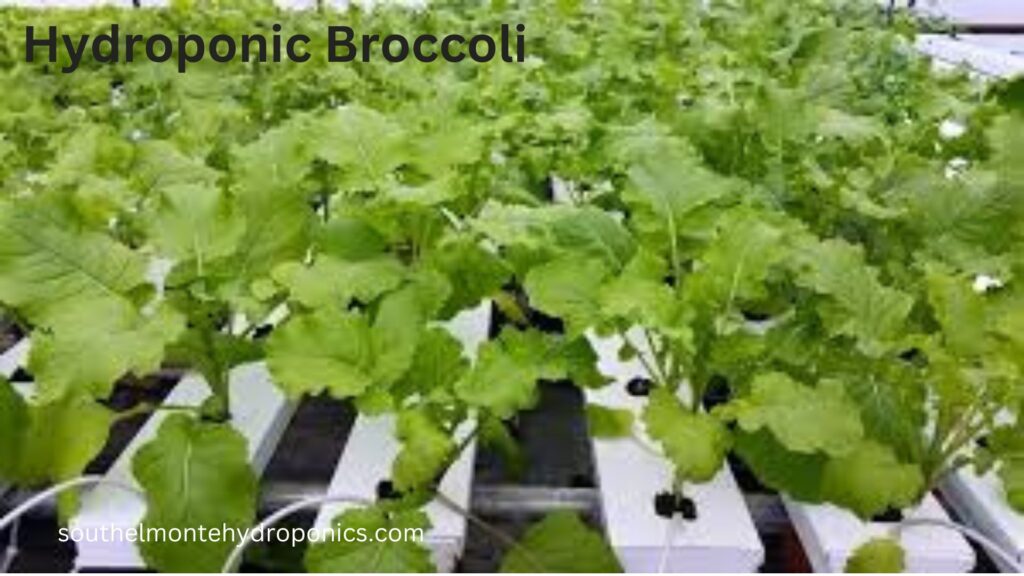
In hydroponic broccoli cultivation, nutrient solutions play a crucial role in ensuring optimal nutrition for the plants. By supplying essential macronutrients, micronutrients, and other vital elements, nutrient solutions provide the necessary building blocks for healthy growth and robust yields.
One of the key considerations in formulating a nutrient solution for hydroponic broccoli is the balance between nitrogen, phosphorus, and potassium. Nitrogen is essential for promoting vigorous vegetative growth, while phosphorus aids in root development and flowering. Potassium, on the other hand, helps enhance overall plant health and resilience. Achieving the right balance of these nutrients is vital for the successful growth and development of hydroponic broccoli plants.
Additionally, it is important to provide secondary nutrients, such as calcium and magnesium, as well as micronutrients like iron, manganese, and zinc. These nutrients are essential for various physiological processes in the plants, including photosynthesis, enzyme activation, and overall nutrient uptake. A deficiency in any of these elements can lead to stunted growth, discoloration, or other detrimental effects. Therefore, a well-designed nutrient solution should encompass all these essential components to ensure optimal nutrition and maximize the growth potential of hydroponic broccoli plants.
Managing pH and EC Levels in Your Hydroponic Broccoli System
Maintaining the optimal pH and EC levels in your hydroponic broccoli system is crucial for the health and productivity of your plants. pH refers to the acidity or alkalinity of the nutrient solution, while EC (Electrical Conductivity) measures the level of dissolved salts in the solution.
Broccoli plants thrive in slightly acidic conditions, with a pH range of 5.8 to 6.5. The pH level affects nutrient availability, as certain minerals become more or less accessible to plants within specific pH ranges. To monitor and adjust the pH, you can use a pH meter or pH test kit, ensuring accurate measurements for precise control.
Similarly, maintaining proper EC levels is essential for providing adequate nutrition to your broccoli plants. The EC level indicates the concentration of nutrients in the solution. Too high EC can lead to nutrient burn, stunting plant growth, while a low EC may result in nutrient deficiencies. Regularly monitor the EC using an EC meter and adjust the nutrient solution’s strength accordingly. By striking the right balance, you can provide your hydroponic broccoli plants with optimal nutrient uptake, promoting healthy growth and high yields.
In the next section, we will explore the various factors to consider when selecting the right lighting for successful broccoli growth in hydroponics. Stay tuned to learn how to create the ideal lighting conditions for your hydroponic broccoli system.
Choosing the Right Lighting for Successful Broccoli Growth in Hydroponics
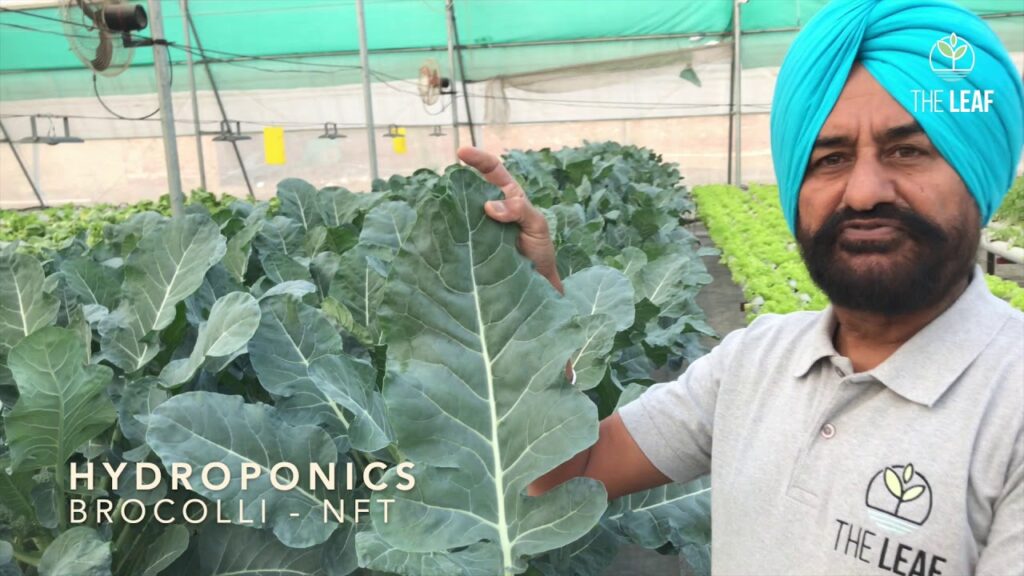
When it comes to cultivating broccoli in a hydroponic system, choosing the right lighting is crucial for successful growth and optimal yields. Broccoli, like many plants, requires an adequate amount of light to carry out photosynthesis effectively. In a hydroponic setup, where plants are grown without soil, it becomes even more important to provide the right type and intensity of light.
One popular option for hydroponic broccoli cultivation is using high-intensity discharge (HID) lights, specifically metal halide (MH) lamps during the vegetative stage and high-pressure sodium (HPS) lamps during the flowering stage. MH lamps emit a light spectrum rich in blue wavelengths, which are beneficial for promoting leafy growth and lush green foliage. On the other hand, HPS lamps emit a light spectrum that includes more red and orange wavelengths, which are essential for flowering and fruiting. By using a combination of these two types of lamps, growers can provide broccoli plants with a well-rounded light spectrum for healthy development.
Temperature and Humidity Control for Thriving Hydroponic Broccoli
Temperature and humidity control are crucial factors in ensuring the thriving growth of broccoli in hydroponic systems. Broccoli thrives in temperatures between 60°F and 70°F (15.5°C to 21°C), with a relative humidity range of 55% to 75%. Maintaining these optimal conditions is essential for the successful cultivation of hydroponic broccoli.
To control temperature, it is recommended to use a combination of techniques such as air conditioning, ventilation, and cooling systems. These methods help regulate the temperature within the controlled environment, ensuring it remains within the desired range.
Humidity control is equally important, as excessive moisture can lead to the development of diseases like powdery mildew, while low humidity can cause plant stress and hinder growth. To maintain appropriate humidity levels, it is advised to use humidifiers or dehumidifiers, depending on the specific needs of the hydroponic system. Additionally, proper airflow and ventilation are crucial to prevent stagnant air and promote healthy growth.
By implementing effective temperature and humidity control measures, hydroponic broccoli growers can create an environment that supports optimal growth and development. This, in turn, enhances the overall health and productivity of the plants, leading to bountiful and high-quality broccoli yields.
Pruning and Training Techniques for Maximizing Hydroponic Broccoli Yields
Pruning and training techniques play a crucial role in maximizing yields and promoting healthy growth in hydroponic broccoli cultivation. By properly pruning and training your broccoli plants, you can encourage the development of strong and productive stems, promote better light penetration and air circulation, and prevent the occurrence of diseases and pests.
One important technique is the removal of side shoots, also known as suckers or axillary buds. These side shoots can divert energy and nutrients away from the main stem, resulting in reduced yield and smaller heads. By regularly removing these side shoots, you can focus the plant’s energy on the main stem and encourage the production of larger and more robust broccoli heads.
Another effective pruning technique is the removal of yellowing or damaged leaves. These leaves are often a sign of nutrient deficiencies or pest infestations and can hinder the overall growth of the plant. By removing these leaves, you can improve the overall health of the plant and allow for better nutrient uptake and photosynthesis.
Training the plants to grow vertically can also be beneficial in maximizing yields. This can be achieved by using trellises or stakes to support the plants as they grow. Vertical growth helps optimize space utilization and allows for better light exposure, leading to healthier plants and larger broccoli heads.
In conclusion, implementing proper pruning and training techniques in hydroponic broccoli cultivation is essential for maximizing yields. By removing side shoots, damaged leaves, and training the plants to grow vertically, you can ensure optimal growth conditions and promote healthier and more productive broccoli plants.
Pest and Disease Prevention Strategies in Hydroponic Broccoli Cultivation
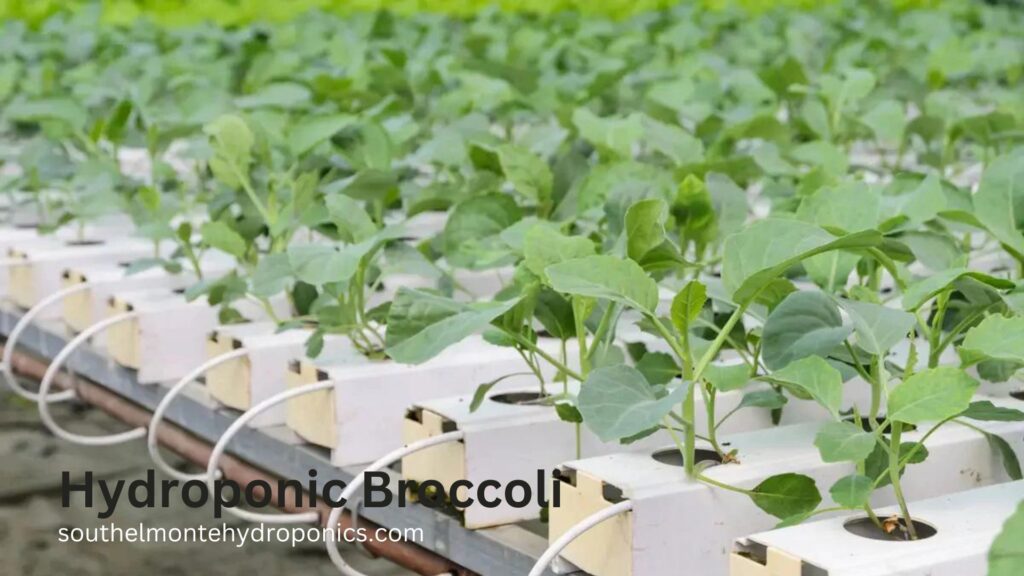
Pest and disease prevention is crucial in hydroponic broccoli cultivation to ensure the health and productivity of your plants. One of the first steps in preventing pest and disease infestations is to maintain a clean and hygienic growing environment. Regularly clean and disinfect your hydroponic system, tools, and equipment to minimize the risk of introducing pathogens or pests.
Introducing beneficial insects, such as ladybugs, lacewings, or predatory mites, can be an effective strategy for controlling pests in your hydroponic broccoli garden. These natural predators feed on common pests like aphids, thrips, and whiteflies, reducing their populations and preventing damage to your plants. Additionally, using sticky traps can help monitor and capture flying insects, further preventing their infestation.
Implementing a strict quarantine protocol for new plants or growing media can also help prevent the introduction of pests and diseases. Prior to introducing new plants, inspect them thoroughly for any signs of pests or diseases. If suspicious, isolate the plants for a period of time to observe their health before integrating them into your hydroponic system.
By following these pest and disease prevention strategies, you can maintain the health and vigor of your hydroponic broccoli plants, resulting in higher yields and healthier produce. Stay proactive, continuously monitor your plants for any signs of pests or diseases, and take immediate action if any issues arise.
Harvesting and Storing Hydroponic Broccoli for Maximum Flavor and Nutrition
To ensure maximum flavor and nutrition in your hydroponic broccoli, it is crucial to harvest the plants at the right time and store them properly. Harvesting broccoli at the correct stage of maturity is key to capturing its full potential. You want to wait until the broccoli heads are firm and tight, and the buds are still closed. This ensures that the broccoli is packed with nutrients and offers a satisfying crunch when consumed. Avoid waiting too long to harvest, as overripe broccoli can become tough and develop a bitter taste.
When it comes to storing hydroponic broccoli, it is essential to handle it with care to maintain its quality. After harvest, it is recommended to keep the broccoli refrigerated to slow down the degradation process. Broccoli thrives in cool and moist conditions, so storing it at temperatures between 32 to 36°F (0 to 2°C) and high humidity levels of around 90% will help preserve its freshness. To prevent moisture loss, it is advisable to wrap the broccoli tightly in a plastic bag or store it in a perforated plastic container. By following these guidelines, you can enjoy the maximum flavor and nutritional benefits of your hydroponically grown broccoli for an extended period.
Here’s a table outlining key aspects of hydroponic broccoli cultivation:
| Aspect | Description |
|---|---|
| Broccoli Variety | Choose Suitable Varieties: Select hydroponic-friendly broccoli varieties such as Marathon, Coronado, or Green Magic. |
| Hydroponic System | System Type: Suitable systems include nutrient film technique (NFT), deep water culture (DWC), or vertical hydroponic towers. |
| Growing Medium | Hydroponic Medium: Use inert mediums like coconut coir, perlite, or hydroponic rockwool for proper support and aeration. |
| Nutrient Solution | Formulate Nutrient Solution: Develop a nutrient solution with a balanced mix of essential nutrients suitable for broccoli growth. |
| pH Range | Optimal pH: Maintain pH levels between 6.0 and 7.0 for broccoli plants to ensure nutrient availability and healthy growth. |
| Temperature and Humidity | Temperature Range: Broccoli thrives in cool temperatures between 60-70°F (15-21°C). Maintain humidity around 40-60%. |
| Lighting Requirements | Lighting Duration: Provide 12-16 hours of light per day using high-quality grow lights, ensuring a consistent light schedule. |
| Plant Spacing and Support | Spacing Guidelines: Follow recommended spacing based on the broccoli variety. Provide support for plants as they grow taller. |
| Pruning and Training | Pruning Techniques: Encourage lateral branching by pruning, promoting a bushier plant and potentially increasing yield. |
| Flowering and Harvesting | Monitor Flowering: Harvest broccoli when the central head is compact and before it starts to flower. Side shoots may develop for additional harvests. |
| Watering Technique | Watering Schedule: Implement a consistent watering schedule to maintain optimal moisture levels in the hydroponic system. |
| Nutrient Adjustments | Monitor Nutrient Levels: Regularly check nutrient levels and adjust the solution based on the growth stage and nutrient needs of broccoli. |
| Pest and Disease Management | Integrated Pest Management (IPM): Implement IPM strategies to manage pests and diseases in the controlled hydroponic environment. |
| Harvesting Frequency | Continuous Harvesting: Harvest the central head first, and then monitor for side shoots to continue harvesting over an extended period. |
| Varietal-Specific Tips | Research Variety Traits: Different broccoli varieties may have specific growth habits. Research and tailor your hydroponic system accordingly. |
| Successive Planting | Plan Successive Planting: Plan for continuous harvesting by starting new broccoli plants as others mature, ensuring a steady supply. |
| Post-Harvest Care | Remove Debris: After harvesting, remove plant debris promptly to prevent the buildup of potential pests and diseases. |
Hydroponic broccoli cultivation allows for precise control over growing conditions, contributing to optimal growth and high-quality yields. Adapt practices based on the specific needs of the chosen broccoli variety and the hydroponic system in use.
Troubleshooting Common Issues in Hydroponic Broccoli Production
When it comes to hydroponic broccoli production, there are a few common issues that gardeners may encounter. One of the challenges that can arise is nutrient deficiency or imbalance. Since hydroponic systems rely on nutrient solutions to provide plants with the necessary elements for growth, it is crucial to monitor the nutrient levels regularly. Insufficient or excessive amounts of certain nutrients can lead to stunted growth, yellowing leaves, or other signs of nutrient stress. Ensuring that the nutrient solution is properly formulated and well-balanced is essential to prevent these problems.
Another issue that can affect hydroponic broccoli production is pH and EC (electrical conductivity) fluctuations. pH refers to the acidity or alkalinity of the nutrient solution, while EC measures its overall nutrient concentration. Both factors play a crucial role in nutrient availability to the plants. Fluctuations in pH or EC levels can hinder nutrient uptake and potentially harm the broccoli plants. It is important to regularly test and adjust these parameters to maintain optimal conditions for growth. Monitoring and maintaining proper pH and EC levels will help ensure that the plants can absorb the necessary nutrients and thrive in the hydroponic system.
By addressing these common issues and staying vigilant in maintaining optimal growing conditions, gardeners can overcome hurdles in hydroponic broccoli production. Identifying and resolving nutrient deficiencies or imbalances, as well as closely monitoring pH and EC levels, will help promote healthy growth and maximize yields. With proper troubleshooting techniques in place, gardeners can enhance their hydroponic broccoli cultivation and enjoy successful harvests.
How often should I check the pH and EC levels in my hydroponic broccoli system?
It is recommended to check the pH and EC levels of your hydroponic broccoli system at least once a week to ensure optimal nutrient absorption and growth.
What are some common pests that can affect hydroponic broccoli production?
Common pests in hydroponic broccoli production include aphids, whiteflies, and spider mites. Regular monitoring and appropriate pest control measures should be taken to prevent infestations.
Can I use organic nutrient solutions for hydroponic broccoli cultivation?
Yes, organic nutrient solutions can be used for hydroponic broccoli cultivation. However, it is essential to ensure that the nutrient solution meets the specific nutritional requirements of broccoli plants.
How can I prevent diseases from affecting my hydroponic broccoli plants?
To prevent diseases in hydroponic broccoli plants, maintain proper hygiene and cleanliness in the growing area. Regularly sanitize equipment, use disease-resistant varieties, and provide good air circulation to minimize the risk of diseases.
What is the ideal temperature range for hydroponic broccoli cultivation?
The ideal temperature range for hydroponic broccoli cultivation is between 60°F (15°C) and 70°F (21°C) during the day, and slightly cooler at night, around 55°F (13°C) to 65°F (18°C).
Can I grow hydroponic broccoli without artificial lighting?
While broccoli can grow in natural light, providing supplemental artificial lighting can help ensure consistent and optimum growth, especially during the winter months or in areas with limited sunlight.
How long does it take for hydroponic broccoli to reach maturity?
Hydroponic broccoli typically takes around 60 to 90 days to reach maturity, depending on the variety and growing conditions.
What are some signs of nutrient deficiencies in hydroponic broccoli plants?
Signs of nutrient deficiencies in hydroponic broccoli plants may include yellowing or browning of leaves, stunted growth, and reduced overall plant vigor. Regular monitoring of nutrient levels can help identify and address deficiencies.
How often should I prune my hydroponic broccoli plants?
It is recommended to prune hydroponic broccoli plants once they have developed 4 to 6 true leaves. Regular pruning helps promote better air circulation and prevents overcrowding, leading to higher yields.
How long can hydroponic broccoli be stored after harvesting?
Hydroponic broccoli can be stored in the refrigerator for up to 7 to 10 days after harvesting. It is best to consume it as soon as possible to enjoy maximum flavor and nutritional value.

